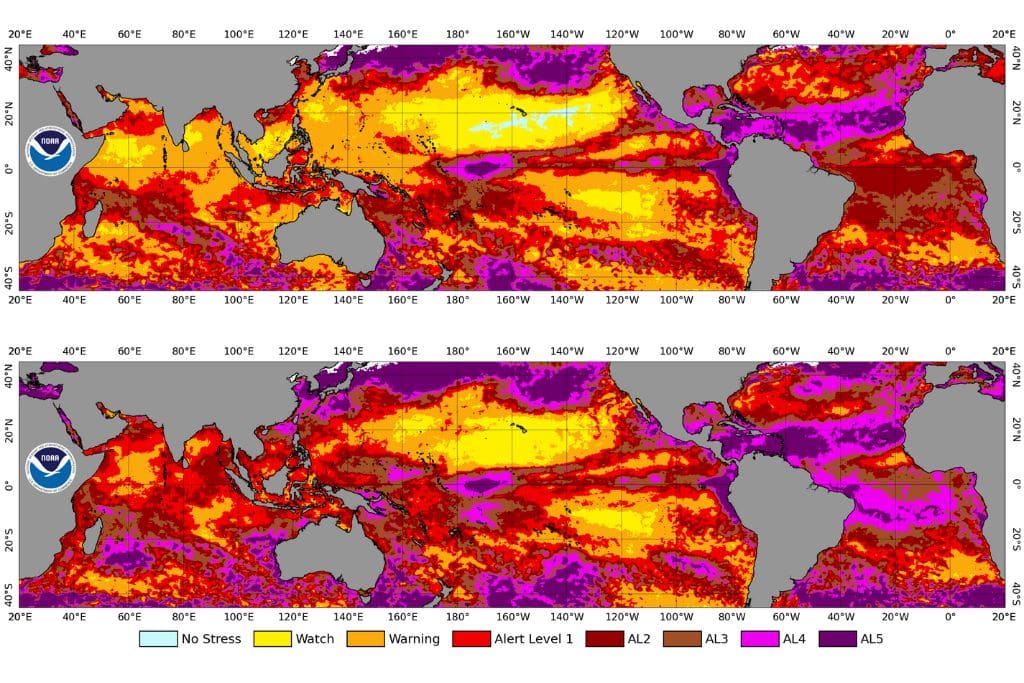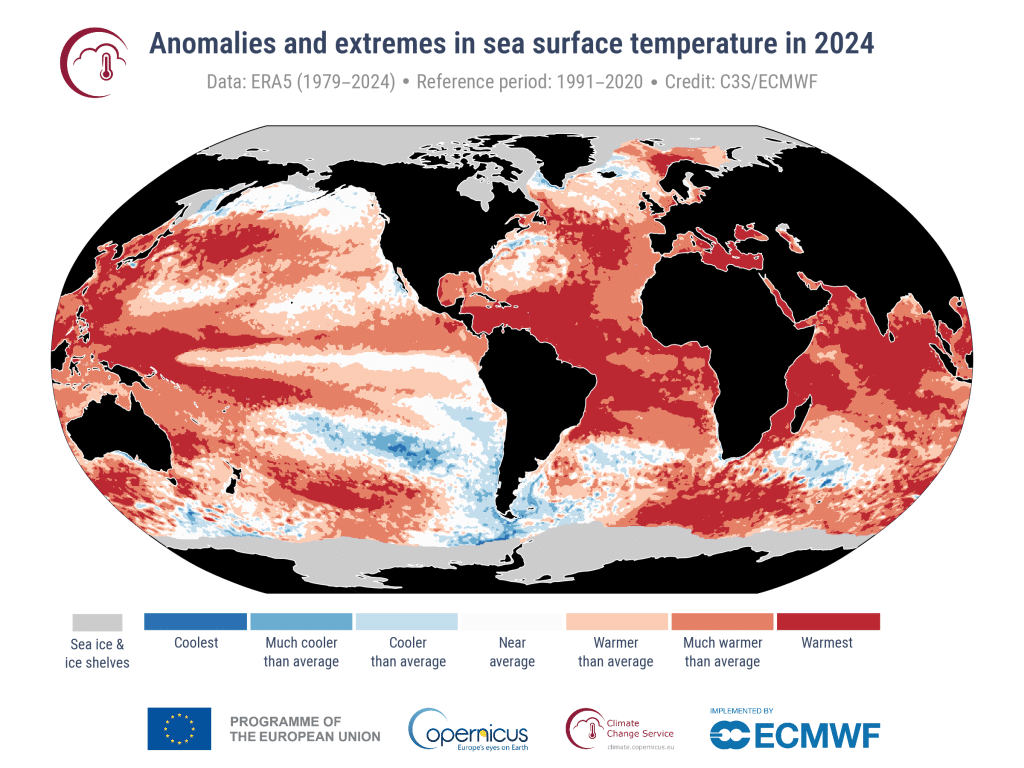“From 1 January 2023 to 20 April 2025, bleaching-level heat stress has impacted 83.7% of the world’s coral reef area and mass coral bleaching has been documented in at least 83 countries and territories,” the US National Oceanic and Atmospheric Administration announced last week.
—
The world’s coral reefs are undergoing a mass coral bleaching event that began in 2023 and became the largest event ever recorded.
Some 83.7% of the world’s coral reef area across at least 83 countries and territories have been impacted by bleaching-level heat stress since January 2023, the US National Oceanic and Atmospheric Administration (NOAA) announced last week.
Among the areas affected were Australia’s Great Barrier Reef – the world’s largest coral reef system, Florida, the Caribbean, Brazil, the eastern Tropical Pacific, large areas of the South Pacific, the Red Sea, the Persian Gulf; and the Gulf of Aden. Widespread bleaching has also been confirmed across other parts of the Indian Ocean basin, NOAA said.
It is the fourth mass coral bleaching event ever recorded and the second to occur in the last 10 years.

Coral bleaching occurs as a heat stress response from rising ocean temperatures, which drives algae away from coral reefs, causing reefs to lose their vibrant colours.
Each of the past eight years has set a new record for ocean heat content, according to the World Meteorological Organization (WMO). The rate of ocean warming over the past two decades (2005-2024) is more than twice that in the period 1960-2005.
2024 was the highest ocean heat level in the WMO’s 65-year observational record. Last year – the hottest year on record – sea surface temperatures reached record levels from January to June. In the latter half of 2024, the temperatures were the second-warmest on record for that time of year, after 2023.
While a bleaching event is not directly linked to corals’ death, more frequent and intense heat stresses make corals more vulnerable to diseases, slowing down their recovery and limiting their ability to spawn.

“As the world’s oceans continue to warm, coral bleaching is becoming more frequent and severe,” NOAA’s Coral Reef Watch coordinator Derek Manzello said last year. “When these events are sufficiently severe or prolonged, they can cause coral mortality, which hurts the people who depend on the coral reefs for their livelihoods.”
Coral reefs are extremely important ecosystems that exist in more than 100 countries and territories and support at least 25% of marine species; they are integral to sustaining Earth’s vast and interconnected web of marine biodiversity and provide ecosystem services valued up to $9.9 trillion annually. They are sometimes referred to as “rainforests of the sea” for their ability to act as carbon sinks by absorbing the excess carbon dioxide in the water.
Unfortunately, reefs are disappearing at an alarming pace. According to the most recent report by the Global Coral Reef Monitoring Network (GCRMN), the world has lost approximately 14% of corals since 2009.
Featured image: Wikimedia Commons.
This story is funded by readers like you
Our non-profit newsroom provides climate coverage free of charge and advertising. Your one-off or monthly donations play a crucial role in supporting our operations, expanding our reach, and maintaining our editorial independence.
About EO | Mission Statement | Impact & Reach | Write for us








